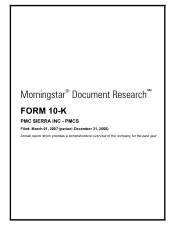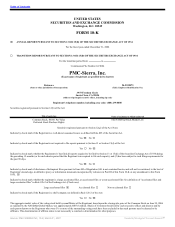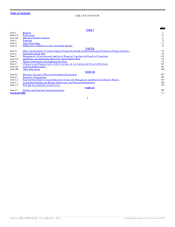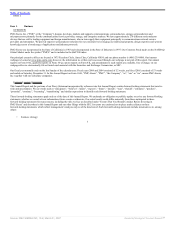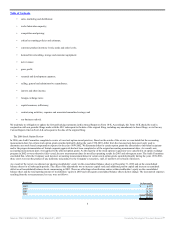Adaptec 2006 Annual Report Download - page 7
Download and view the complete annual report
Please find page 7 of the 2006 Adaptec annual report below. You can navigate through the pages in the report by either clicking on the pages listed below, or by using the keyword search tool below to find specific information within the annual report.
Table of Contents
The restatement had no impact on our consolidated statements of operations or consolidated statements of cash flows in 2003 or subsequent periods. The
restatement had no impact on our cash position or previously reported revenues.
INDUSTRY OVERVIEW
Continued growth in Internet usage and digital consumer devices continues to drive increasing demand for bandwidth and efficient networks that can manage
these higher levels of data traffic. At the same time, communication service providers are seeking ways to increase their revenues by bundling and delivering a
range of services to their customers in a cost-effective manner. To enable the ‘triple’ play of services (which includes voice, video, and data), communication
service providers continue to transition their voice-centric infrastructure to data-centric networks. Newer applications such as Voice Over Internet Protocol
(VoIP), video-on-demand, Internet Protocol Television (IPTV), third generation wireless services, and network-attached storage are being deployed globally.
This is resulting in increasing requirements for service providers and enterprises to upgrade and improve their network infrastructure and storage management
capabilities. Enterprises, corporations, small offices and home offices are expanding their networks to better capture, store, and access large quantities of data
efficiently and securely.
Different types of data transmitted at various speeds over the Internet require service providers and enterprises to invest in multi-service equipment that can
aggregate and transport these varied types of network traffic. In simplified terms, Internet traffic moves over a series of distinct networks, with each network built
using copper wires, coaxial cables or fiber optic cables. These networks carry high-speed traffic in the form of electrical and optical signals that are transmitted
and received by complex networking equipment. To ensure this equipment and varied networks can communicate and interoperate with each other,
communications equipment manufacturers and makers of communications semiconductors have developed numerous communications standards and protocols
for the industry. These communications and storage protocols make it easier for complex high-speed data traffic to be sent, received and stored reliably and
efficiently — whether intra-office, across the country, or internationally. The products we sell, and the protocols used in development of our devices, are
described below.
MARKETS THAT WE SERVE
We sell our semiconductor solutions primarily into five general areas of the worldwide network infrastructure, which we refer to as the Access, Metro, Enterprise
Storage, Enterprise Networking, and Customer Premise markets. The products and solutions that we sell into the Metro and Access areas of the market are
largely driven by the capital spending of service providers in the
5
Source: PMC SIERRA INC, 10-K, March 01, 2007 Powered by Morningstar® Document Research℠

